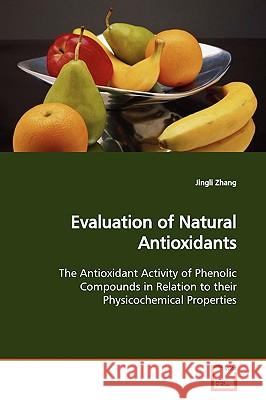Evaluation of Natural Antioxidants » książka
Evaluation of Natural Antioxidants
ISBN-13: 9783639135190 / Angielski / Miękka / 2009 / 228 str.
This book relates the physicochemical properties of phenolic compounds to their antioxidant activities. It focuses on the partitioning of phenolic compounds between hydrophilic and lipophilic environments and the relevance this has to their in vivo health effects. The partition coefficients (log P) of phenolic antioxidants were measured by RP-HPLC. The lipid Peroxidation Inhibition Capacity Assay (LPIC), based on using liposomes to simulate a cell membrane environment, was developed to measure the activity of antioxidants with a broad range of structures. The activities were correlated against several physicochemical parameters and used to derive a predictive model to calculate the LPIC activity. The LPIC activities also correlated well to published LDL inhibition activities but not to measured ORAC activities. These findings suggested that behaviours of antioxidants in the small unilamellar vesicles of the LPIC assay were similar to that in the LDL assay but not to the aqueous phase based ORAC assay. The LPIC assay may therefore be a better indicator of potential health benefits of antioxidants in the human body.
This book relates the physicochemical properties of phenolic compounds to their antioxidant activities. It focuses on the partitioning of phenolic compounds between hydrophilic and lipophilic environments and the relevance this has to their in vivo health effects. The partition coefficients (log P) of phenolic antioxidants were measured by RP-HPLC. The lipid Peroxidation Inhibition Capacity Assay (LPIC), based on using liposomes to simulate a cell membrane environment, was developed to measure the activity of antioxidants with a broad range of structures. The activities were correlated against several physicochemical parameters and used to derive a predictive model to calculate the LPIC activity. The LPIC activities also correlated well to published LDL inhibition activities but not to measured ORAC activities. These findings suggested that behaviours of antioxidants in the small unilamellar vesicles of the LPIC assay were similar to that in the LDL assay but not to the aqueous phase based ORAC assay. The LPIC assay may therefore be a better indicator of potential health benefits of antioxidants in the human body.











